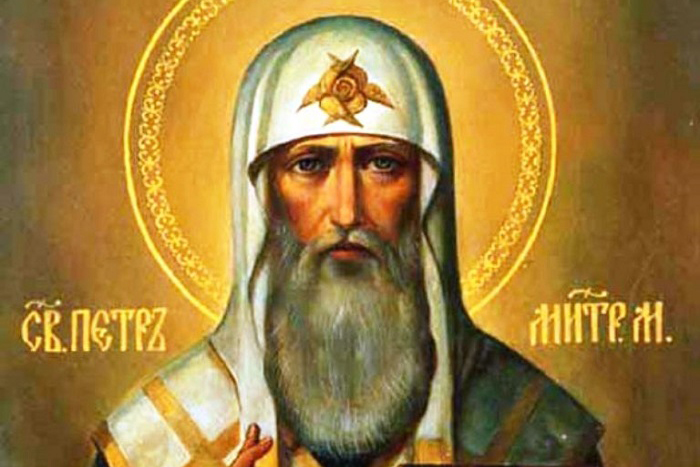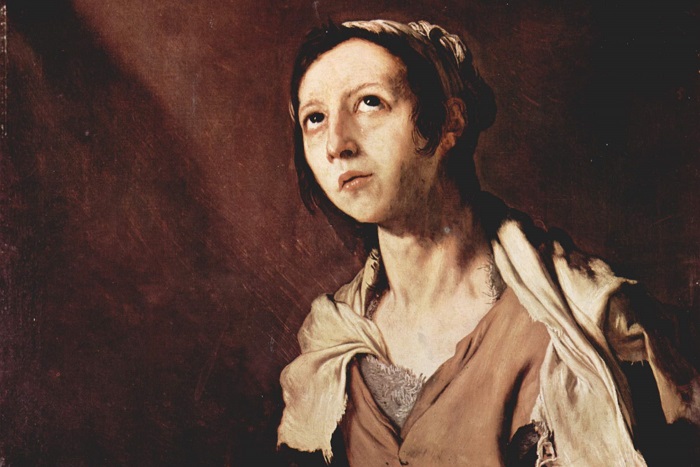
The secret of Moscow rising above other glorious and ancient Russian cities does not lie in its advantageous location at the crossroads of trade flows and waterways. It is in the covenant of Saint Peter, the first metropolitan of Moscow. He prophesied that Moscow shall exist as long as the Dormition Cathedral remains intact and “my bones are laid therein”.
The Metropolitan’s Covenant
Peter, the Metropolitan of Kiev and All Russia became Moscow’s first hierarch. He arrived in the new town at the invitation of Grand Prince Ivan Kalita from Vladimir the Great and laid the foundation of the Dormition Cathedral. He willed to be buried in it, predicting that this cathedral would be the key to the prosperity of the city and the Prince’s family, “If you listen to me, then you will be famous with your kin more than any other prince, and your city will be distinguished among all Russian cities, and holy hierarchs will live in it, and its enemies will be defeated, and God will be glorified in it”.
The Metropolitan was buried in a tomb he had prepared for himself in the wall of the Dormition Cathedral. Thus, Metropolitan Peter’s relics became the “rock” in the foundation of the Dormition Cathedral of the Moscow Kremlin and its first holy shrine.
Popular veneration and healing miracles of Metropolitan Peter’s relics began immediately after his death. Under the Metropolitan Alexis of Moscow, as the chronicle says, a mute boy with a paralyzed hand was healed at the tomb of St. Peter in 1372 on the feast of the Dormition of the Mother of God; St. Alexis ordered to ring the bells and served a moleben. Metropolitan Peter’s official canonization took place 13 years after his death, in 1339.
The Mother of God Settles a Dispute
St. Peter was one of the first Russian metropolitans, whose lifetime was marked by the disgrace of the Russian land. According to his biography, he was born in the mid-13th century, when the Tatars invaded Russia.
At the age of 12, the boy entered a monastery where he studied the Holy Scripture, painted icons (he was known as a “marvelous icon painter”), subjected himself to solitude and seclusion, and was elected the abbot of a new monastery. He was said to be mild in admonition and a gentle critic of those who had sinned. If he had nothing to offer for charity, the future Metropolitan Peter would give away his own icons and clothes.
Prince Yury of Galicia, on whose land the new Novodvorsky Monastery was located, wanted to have Peter as the Metropolitan of All Russia. When the election time came, Peter went to Constantinople, where the candidate for the chair of Metropolitan of Kiev was usually endorsed, at the request of Prince Yury. However, many other Russian princes had their own candidates for the Metropolitan’s throne at that time. Any principality typically gained considerable prominence if the Metropolitan of All Russia chose it as his see. Abbot Peter had a rival, too. Grand Prince of Vladimir, St. Michael of Tver, nominated his own candidate, Abbot Gerontius. According to the legend, Gerontius, who had dreamed of becoming a metropolitan, unlawfully seized the vestment that belonged to the late Metropolitan Maximus.

According to the Metropolitan Peter’s biography, the Blessed Virgin Mary herself resolved the dispute by appearing to Gerontius and saying that Peter was God’s chosen one to be the Metropolitan of Russia.
Peter returned to Russia in 1308 having been made Metropolitan by Patriarch Athanasius of Constantinople. Unfortunately, he could not find a place for his residence in the atmosphere of feuds and political strife. Metropolitans had not lived in Kiev since 1300 – devastated by the Tatars, the city was practically deserted. Prince Michael – the great prince who reigned in Vladimir, where the see of metropolitans had been so far – didn’t like him. Metropolitan Peter increasingly stays in Moscow, because he found rapport with Ivan Kalita, its prince. Peter finally chose Moscow as his place of residence in 1322 and bequeathed it to his successors, the metropolitans of Kiev.
Libel
Metropolitan Peter exercised strict supervision over his clergy, whose moral and educational level inevitably decreased during the collapse of Russia. His epistle, “Instruction for the Hegumens, the Priests, and the Deacons,” has survived. “First of all, you should be enlightened by meekness and humility, cut off… rage, anger, envy, hatred, drunkenness, which is the root of all evil, and ridicule, from your hearts,” Peter writes. “If you do good before God, then you will be in a position to teach your spiritual children, too.”
The Metropolitan repeatedly acted as a peacemaker between the princes, depriving them of blessings for campaigning against each other. He pointed out that the Tatar invasion was a lesson for the Russian land, which had not wanted to live in peace, and that the road to peace was one of unity and brotherly love.
Metropolitan Peter often prevented bloodshed; however, he also made many enemies. Bishop Andrew of Tver sent a signal to Constantinople accusing Metropolitan Peter of simony, that is, appointing bishops for money. The patriarch did not believe the charges against Peter but ordered an investigation and demanded explanation. A synod of bishops was convened to look into the case. All members of the synod began to reproach the slanderer but Metropolitan Peter told the bishop who had accused him falsely, “Peace be upon you, my child. It wasn’t you who did this; it was the ancient hater of the human race, the devil. Henceforth, take heed and don’t lie, and may the Lord forgive you for what you did.” Bishop Andrew was left unpunished. Metropolitan Peter, in addition to his meekness and humility, also showed political wisdom, for he did not want to increase the tension between the rulers of Tver and Moscow by condemning the bishop of Tver.
The struggle for the unity of Russia was the main spiritual achievement of Saint Peter. A few decades later it was continued by another Moscow saint, Metropolitan Alexis.
Living Relics
The ancient Dormition Cathedral was rebuilt in 1472. They removed the tombstone of the saint’s shrine and saw his incorruptible relics in the open: during the 1382 fire at the time when Khan Tokhtamysh attacked Moscow, the flames destroyed the saint’s coffin, but the body remained unscathed. The relics of Metropolitan Peter were moved to a new stone tomb.
Two years later, the church, which was under construction, collapsed and the relics of the saint were buried inside it but were not damaged. The famous Aristotele Fioravanti built a new Dormition Cathedral in 1479. The relics of Metropolitan Peter were solemnly transferred to the cathedral on August 24, 1479. Since that time, the icons written by him and a wooden pastoral staff with the inscription “Humble Peter the Metropolitan of All Russia” have also been kept here. A celebration in honor of the translation of the relics of St. Peter, Metropolitan of Moscow and All Russia, was established on the day of the translation of his relics (August 24, O.S.).



